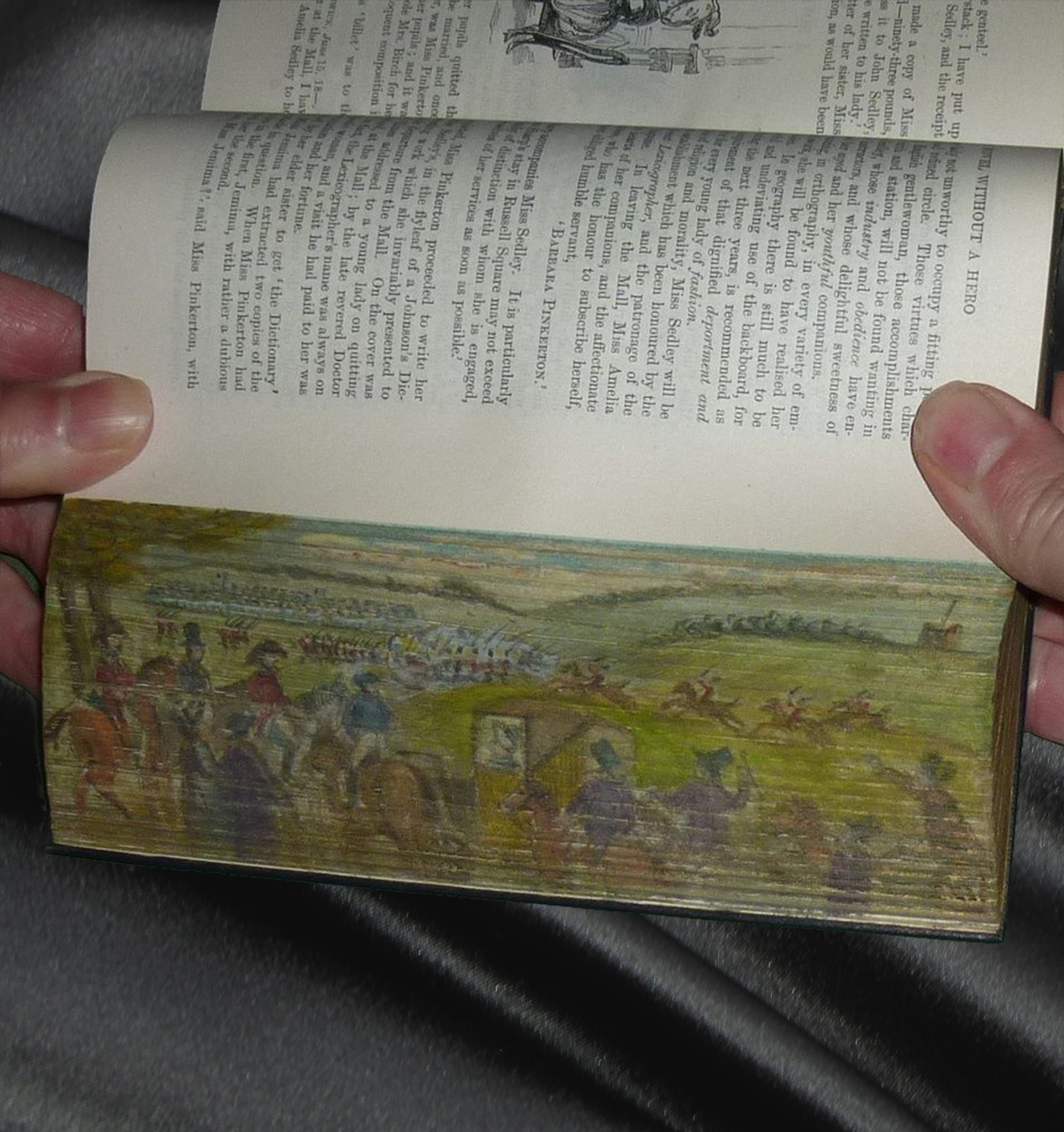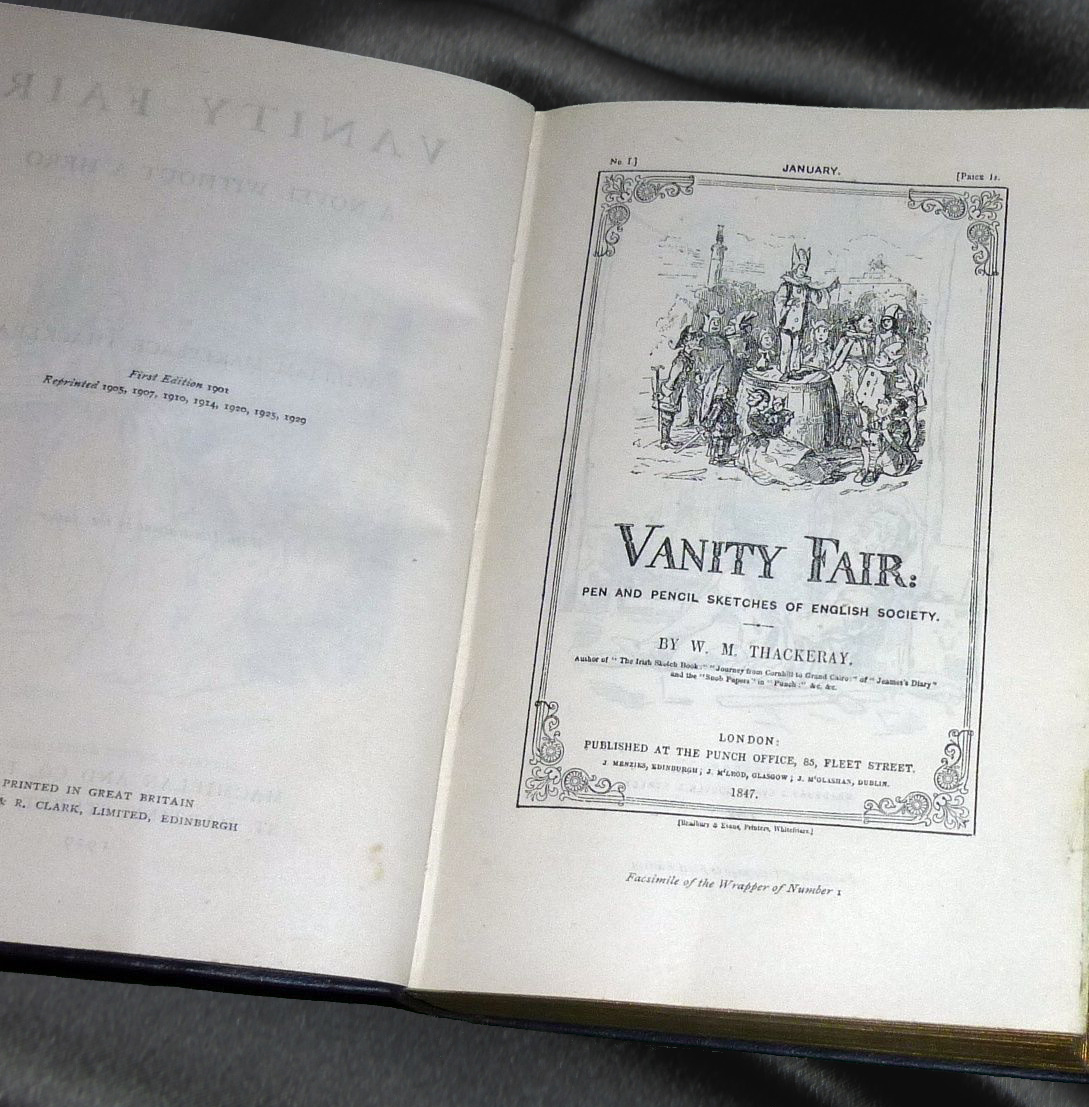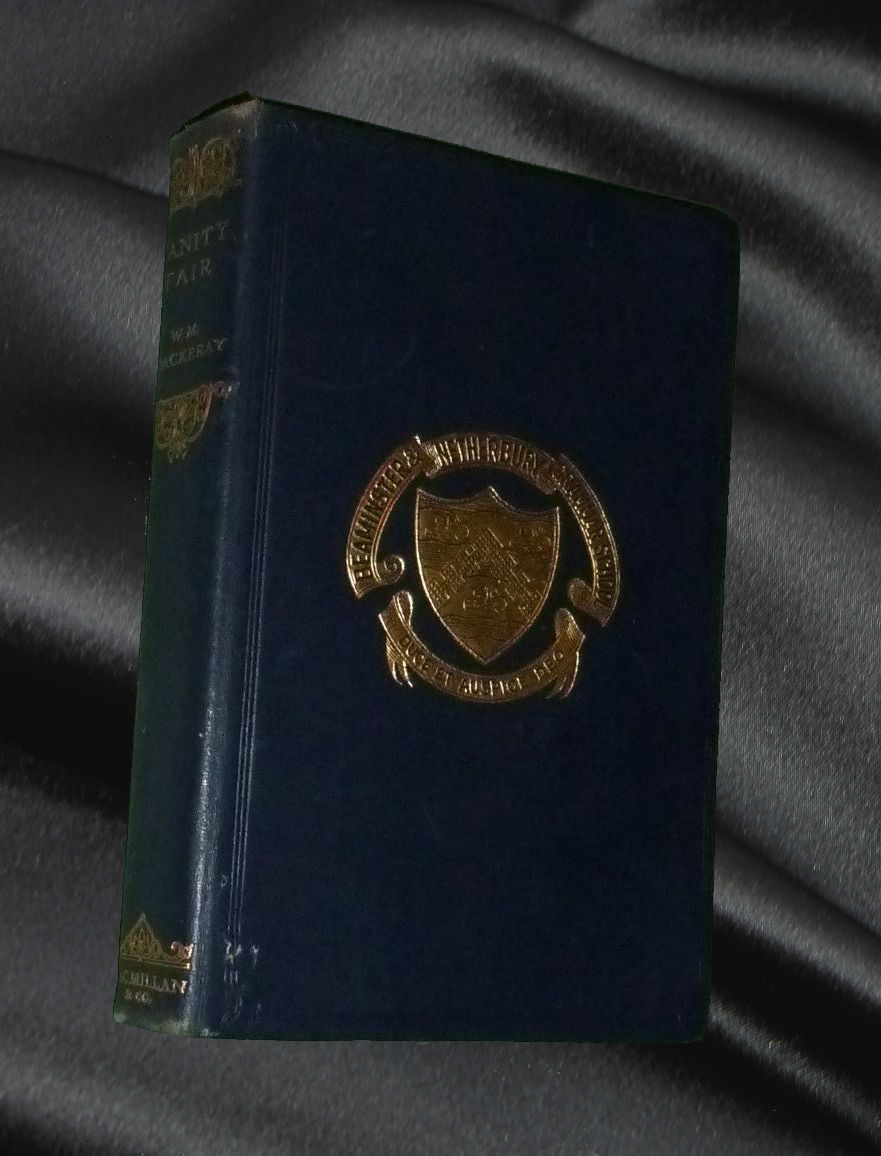William Makepeace Thackeray
William Makepeace Thackeray
Rare Hidden Fore-Edge Painting - 1929
An exceedingly rare and one-of-a-kind “fore-edge painting” on an attractive 1929 edition of William Makepeace Thackeray’s Victorian novel Vanity Fair, in dark navy leather with bright gilding on cover, spine and all edges. This was a presentation copy from a British school to honor the accomplishment of a particular student, as evidenced by the plate affixed to the inside cover, including the name and crest of Beaminster & Netherbury Grammar School, awarding the prize to “C. May Wood” for “2nd Place Form V,” presented by “The Governors” in October 1931, and signed by the Headmaster.
A fore-edge painting is a scene painted on the edges of the pages of a book, usually with watercolors. There are two basic forms, including paintings on edges that have been fanned and edges that are closed: the first instance a book edge must be fanned to see the painting (as in our case) and in the second the painting is on the closed edge itself and thus should not be fanned. In order to view the painting, the leaves of the book must be fanned, exposing the edges of the pages and thereby the painting. For the fanned painting the watercolor is applied to the top or bottom margin (recto or verso) of the page/leaf and not to the actual “fore”-edge itself.
The actual artist’s name is lost in history, but the scene is very clearly that of the Battle of Waterloo, around which the book’s story takes place, and appears to be taken from the 1815 painting by William Sadler:

William Sadler II [Public domain], via Wikimedia Commons
Fine books like this were awarded at many schools throughout Britain to students who had exceled in a particular subject. The Beaminster & Netherbury Grammar School was a small grammar school in the town of Beaminster, in Dorset, England, founded about 1868 and closed in 1962.




